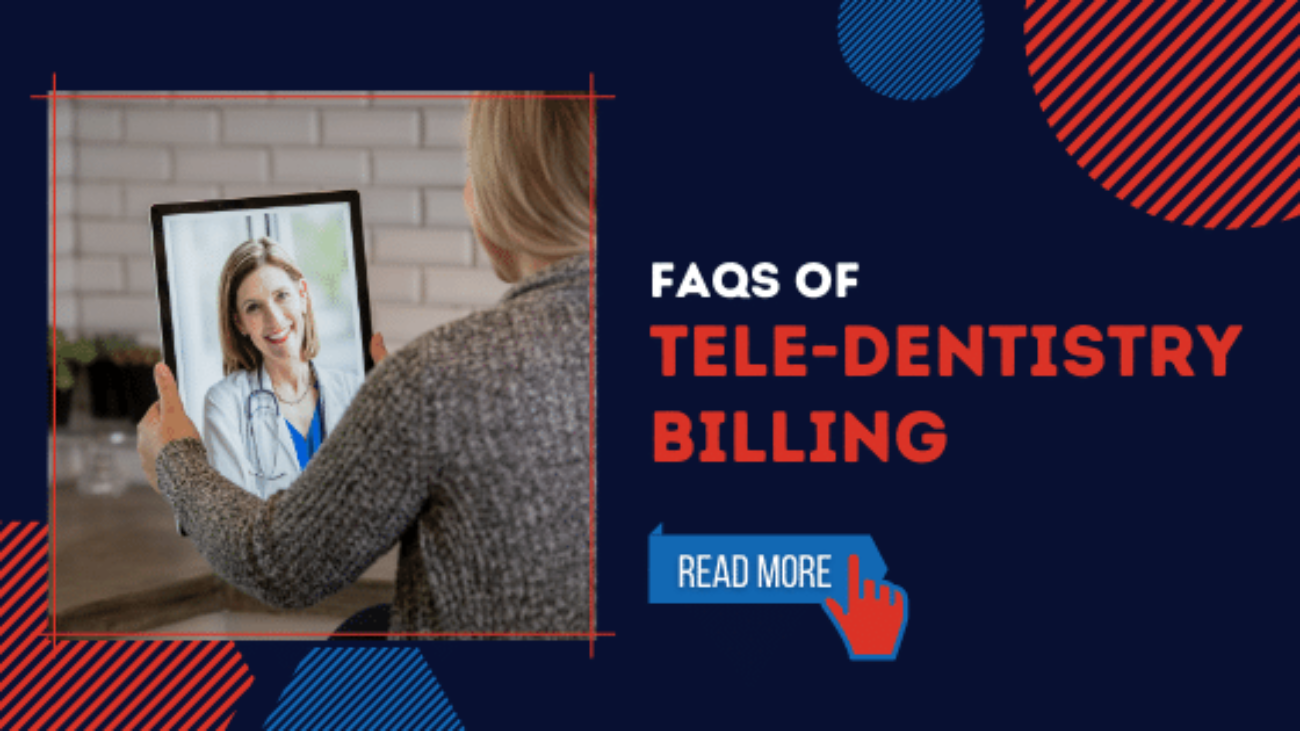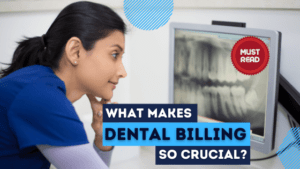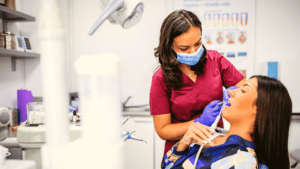What could be the best method or process to be successful with Teledentistry billing? Is Teledentistry billing a relevant topic during this Covid-19 outbreak? Well, healthcare revenue cycle management companies and healthcare professionals consider it as a great option at present.
Many dental offices are shut down and dental professionals must rely on Teledentistry or telehealth systems to continue to render their services for the patients. In order to maintain good oral health, dental service is required during this pandemic just like the other medical necessities.
During this pandemic crisis, Teledentistry can be the only way for patients to get diagnosed or treated for their oral diseases. However, keeping the patient care aside, Teledentistry billing also might be a huge task to perform by healthcare professionals. Healthcare revenue cycle management companies are coming up with innovative ideas to fill dentist’s pockets without any delay.
What is Teledentistry?
- Teledentistry is a way of dental consultation with the use of electronic information, imaging and communication technologies that includes interactive audio, video as well as data communication stored to support and render dental services like delivery, diagnosis, consultation, treatment and transfer the information in electronic form.
- Teledentistry is evolved with advanced treatment options and recently has gained attention from healthcare industry.
- It also paves a way for collaborations between dental hygienists, patients and other care takers.
- Teledentistry is facilitated virtually. When a patient with tooth ache takes a video or photo and shares it with the dental professional from a remote area, the dental professional proceeds by examining and determining the issues.
- The patient will be prescribed with certain medications if necessary until the ache heals or until close examination at dental office is done.
- Teledentistry is also an opportunity that allows safer and easier approach towards any queries and advising better solutions and prescriptions.
- Patients need not travel longer distances to consult dental hygienist, Teledentistry connects dentists and dental hygienist by consulting the patient sending a proper feedback to dentists over internet connection.
- There are different forms of Teledentistry that includes real-time video, video camera on feature phone, laptop as well as other devices. Asynchronous recorded dental health details in the form of X-ray, imaging is also essential.
- Remote monitoring and also one of the mobile health options that is either used in synchronous as well as asynchronous phenomenon.
- American Dental Association recommends teledentistry patients to receive treatment with required proper documents including summary of services.
- Healthcare revenue cycle management companies are very apt to aid with necessary documentation and claims submission for dental professionals.
Benefits of Teledentistry :
- Teledentistry provides an opportunity for patients to address their dental problems immediately with dental professionals and can receive prescription based on the requirements of dental procedures and help to get treated until dental issues are allowed to be diagnosed in the office.
- Of course it is cost efficient and often lesser than office consultations. It becomes very easy for patients to eliminate travel charges.
- Healthcare revenue cycle management companies extend their support to dental professionals who encourage teledentistry by assisting them in accurate and proper documentation such as pre-authorization, patient demographic details and in fact denial management process.
- Teledentistry provides opportunities for patients in remote and have no access to travel longer distances.
- It’s a chance for dental professionals to assist patients in large number compared to office consultations.
Dental Insurance Coverage for Teledentistry:
- Many healthcare revenue cycle management companies and dental professionals confront issues in coverage benefits when it comes to teledentistry billing.
- Teledentistry is considered to be a coverage benefits under selected insurance companies.
- According to American Dental Association in Teledentistry, dental benefit plans as well as public and private insurance companies attempt to provide coverage for certain procedures using teledentistry techniques and methods either synchronous or asynchronous are covered to the same extent to that of services.
- Few dental benefit coverage plans and reimbursements at present apply in-office consultation services through teledentistry.
- Based on Teledentistry report, 2020, it’s evident that current insurance companies are ready to cover Teledentistry procedures for the services performed.
- It’s easy to access teledentistry through apps and virtual connection. But HIPAA compliance typically doesn’t permit few apps and virtual connections for teledentistry and telehealth communication.
- Current pandemic has brought social platforms to utilize for further aid and patient care.
Coding (CDT) for Teledentistry:
- Teledentistry denials actually start from reporting inappropriate place of service codes and CDT codes.
- Usually as known, healthcare revenue cycle management companies always will look for Teledentistry codes to be submitted and reported in addition to another procedure or diagnosis codes as they don’t fall under standalone codes.
- POS code 2: The place of service or location where teledentistry services or telehealth services are provided via telecommunications were added to that set of codes.
- Teledentistry services can be reported using D9995 and D9996 codes with their diagnosis codes along.
- D9995 Teledentistry- Synchronous and Real-time Encounter: This is reported in addition to other procedure that’s delivered on the date of service to the patient.
- D9996 Teledentistry- Asynchronous: The information is stored and submitted to dental professionals for a subsequent review. This is also reported in addition to other procedures that are delivered on date of service to the patients.
- Healthcare companies hold the responsibility to enter accurate codes for teledentistry procedures. Few applicable State regulations and rules may also determine the oral health and document as well as report teledentistry codes.
For more suggestions, please comment below, we will definitely consider them if relevant. For more queries and updates on healthcare, please subscribe to our blog.




